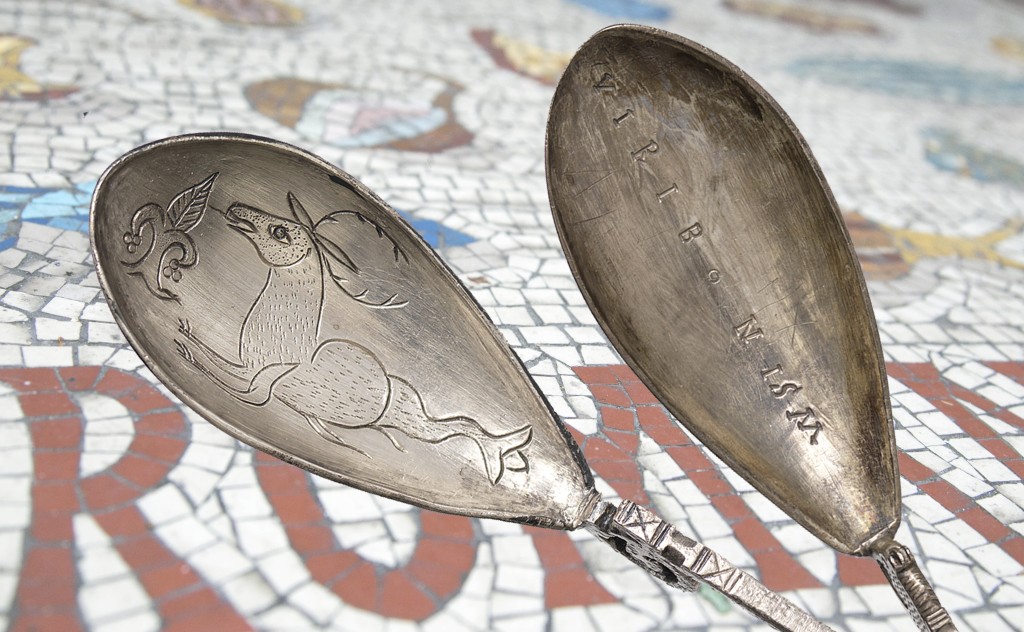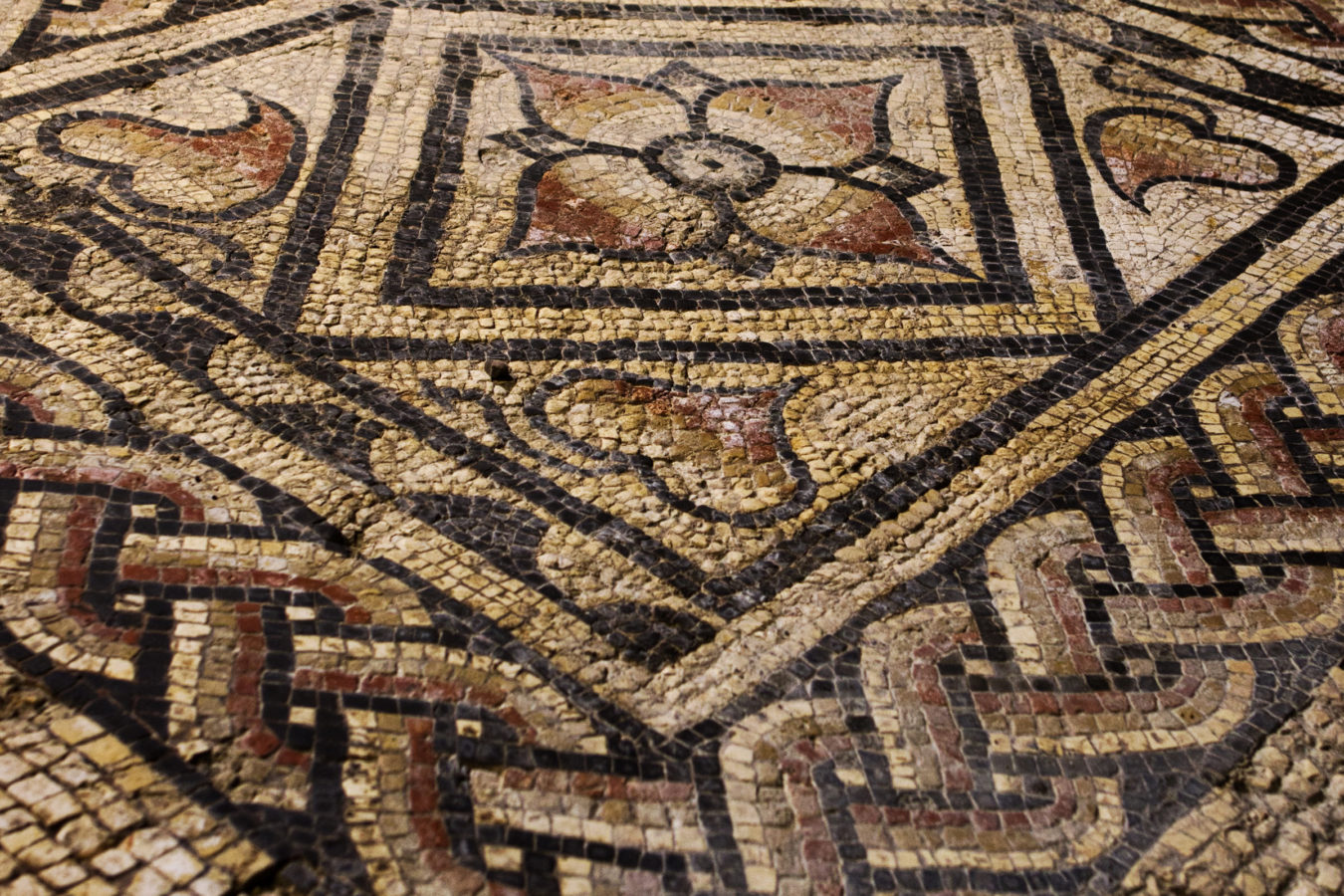
Silverware
When the garrison was withdrawn, Roman Canterbury was no longer safe. Townspeople fled as...
This item is not currently on display. The swords are on loan to the British Museum as part of Legion: life in the Roman army
When archaeologists dug down they discovered the grave of two Roman cavalry soldiers. However, this was no ordinary grave and suspicions over the cause of death were raised. Unknowingly, archaeologists had just unearthed a real Roman Murder Mystery.
The skeletons of the two men revealed they were about 20 and 30 years of age. Both had two military long swords in their scabbards along with decaying hobnail boots and were buried head to toe, one on top of another. This was unusual as Roman burials usually took the form of one individual lying full length on their back.
Archaeologists were intrigued as the position of the skeletons suggested that they had been carelessly, perhaps hurriedly, dumped into the grave. The other unusual thing was the cavalrymen were buried with their swords. The two swords seem to have been thrown in after the bodies. Normally after death, a soldier’s weapons would be returned to an armoury. The Roman Army was very strict about the return of such valuable weapons so not returning the swords was unheard of.
The grave was also found inside the city walls, yet official burials in Roman times were made outside the walls, in cemeteries. All the evidence was beginning to suggest the burial may have been the result of a grisly murder or execution.
But how could this be if the skeletons were intact?
Poison or disease then became a possibility. These affect the soft tissue and tend to attack parts of the body other than the skeleton, leaving the bone unmarked.
Then again, if an individual met a violent death caused by a weapon, the bones would not necessarily be hit or cut. Whatever the cause of death all the evidence from this ‘grave’ suggests foul play, or at the very least a ‘cover up’ job…
By the third century AD, every soldier in the Roman army used a spatha sword. Foot soldiers wielded spathae with a tapered point to penetrate enemy armour; the cavalry used spathae with rounded ends to avoid injuring their horses. Despite their long hilts, these weapons were probably only held in one hand. This pair date from the second to the third century AD and are rare survivors.
The swords have long ‘tangs’ – the continuation of the metal from the blade of a sword. On Roman swords, the tang passes through the entire handle from the thick guard and ridged grip to a large spherical pommel. This design gave soldiers a very good grip and stopped the sword from snapping.
Scientific analysis shows that the decayed sword scabbards, grips and cross-pieces were made of wood (maple and poplar or willow). X-rays show the shorter sword was made from four strips of iron forged together by hammer-welding. The longer sword has a central twisted bar, forged with a backing of plain strip iron.
They date from the 2nd or early 3rd century AD and are rare artefacts.
WHO DID IT? Do you think this is evidence of Roman foul play? The soldiers couldn’t have buried themselves, so who did it? Did they meet their end by a deadly disease or was it the work of a disgruntled Officer…what do you think?
